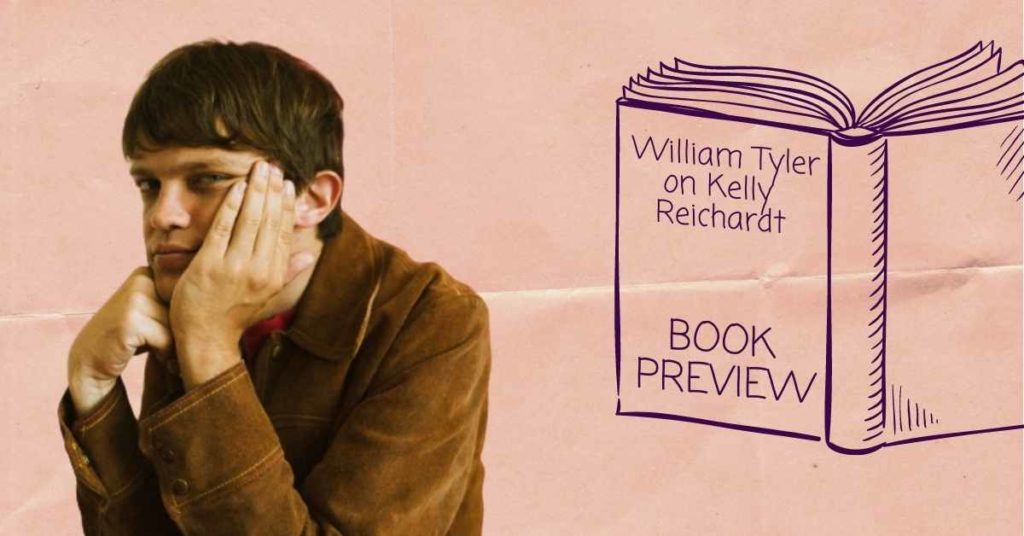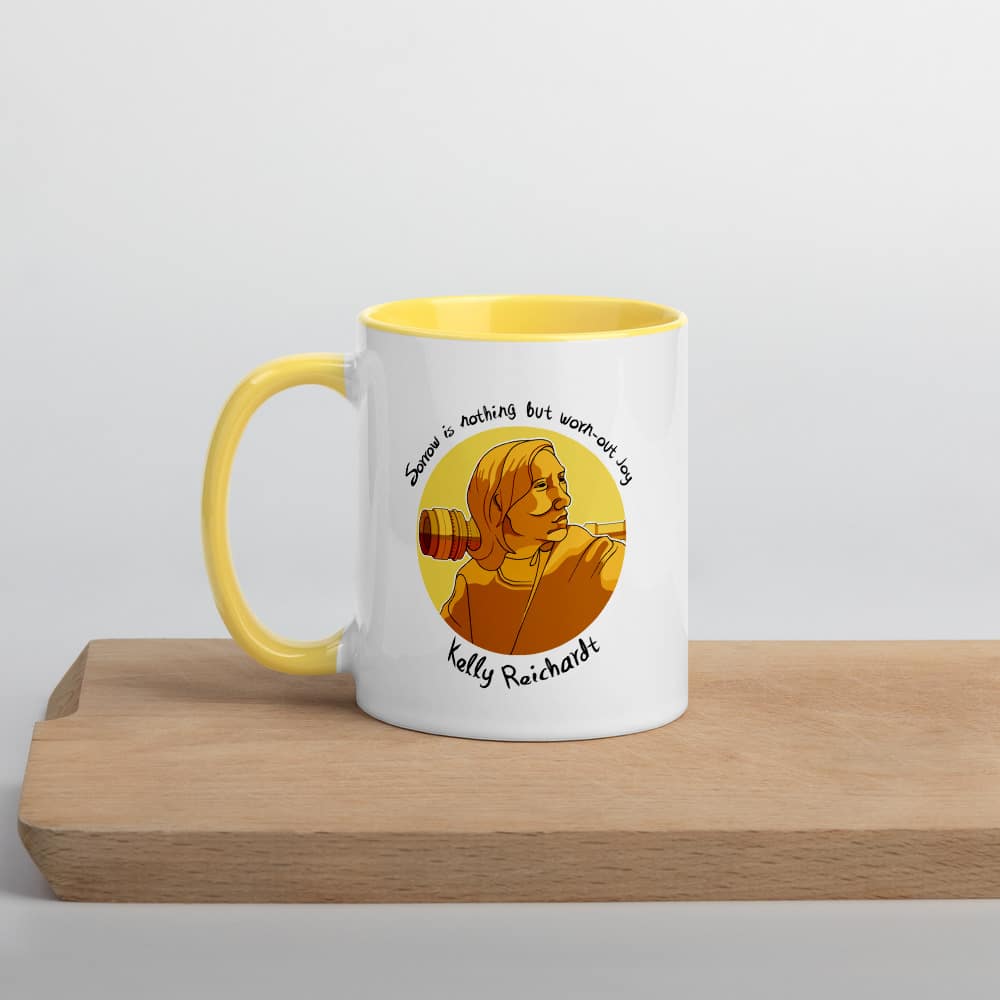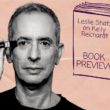First-time film composer William Tyler deconstructs the instruments and methods used to create First Cow’s gorgeous score. This is an excerpt of our Reichardt ebook, Roads to nowhere.

First Cow is composer and musician William Tyler’s first film score. A solo guitarist best known for his instrumental folk music, he’s also performed as part of Silver Jews. Tyler has composed all of the film’s music and played it almost all himself, on multiple instruments from the dulcimer to the guitar to the pump organ; his friend Shelly Burgon plays the harp on a couple of tracks. M.C. Taylor, his tour mate from Hiss Golden Messenger, has said that Tyler “connects the dots between Sandy Bull, Richard Thompson, Bruce Langhorne, and Reggie Young.” Interestingly, Tyler cites Bull as an influence and reference point that he and Reichardt used for devising the music of First Cow.
Throughout his career, Tyler has integrated multiple American and British folks influences into his work on a range of instruments. In a review of Tyler’s first solo album Behold the Spirit on Pitchfork, Grayson Currin commented, “Just as Lambchop’s [one of Tyler’s former bands] pan-American indie incorporates soul, rock, country and outsider music into one weirdly warped mold, Tyler integrates a dozen different approaches. He’s as comfortable with an electric as an acoustic, as accomplished conducting a long, coruscated drone as he is gliding through fingerpicked hymns. The English folk of Pentangle and the American hum of Tom Carter are clear references, as are Indian ragas and Appalachian ballads.”
This mélange of influences and styles made Tyler the perfect fit for First Cow, a story of people from around the world — Britain, China, Eastern US, and Indigenous peoples — who all find themselves in a new frontier outpost in Oregon. For example, Tyler made use of the dulcimer, an instrument that wasn’t even invented until the 1900s in Appalachia, after the film’s timeline, but which has the benefit of being able to sound both like traditional Chinese music and American folk. Tyler grounded his compositions in modal music because it allowed him to more easily integrate these differing styles, both of which use modals. At the same time, using an American instrument like the dulcimer, and instruments that have been used around the world and in the US, like the pump organ and harp, contributed to the film’s distinctly American sound that is influenced by various parts of the world.
Because the film’s sound design is so rich and detailed, with the sounds of the river, leaves, wind, and crickets, Tyler’s compositions were written to jive with the film’s existing sound design. Using films like Satyajit Ray’s Apu trilogy (Pather Panchali, 1955; Aparajito, 1956; and The World of Apu, 1959), The Life of Oharu (Kenji Mizoguchi, 1952), and Ugestu (Kenji Mizoguchi, 1953) as inspiration, part of a watchlist provided to Tyler by Reichardt to help him get a sense of what she was going for with the film’s sound, Tyler’s score cannot be understood in isolation from the rest of the film’s sound. Instead, he and Reichardt were very specific about when and where the score would accentuate the film’s emotional beats and sounds, and when the score should leave more space for the background sounds to become dominant.
In this interview, Tyler discusses the collaborative art of film composition and how it differs from composing as a solo artist, how he approached the film’s compositions, and how he worked with the film’s existing sound design to craft the music.
Seventh Row (7R): How did you get involved with First Cow?
William Tyler: I have a friend, who’s a filmmaker, who connected me with Anish [Savjani], one of the producers of the film. It was one of those situations where I got an email that was like, “Hey, I hope you’re doing well. We haven’t talked in a while. You’re on our short list of composers to work on the new Kelly Reichardt movie.”
I kind of thought it was a mistake. I was really excited, but also, like, this can’t be real! I’m a fan of Kelly’s; I’d never done a film soundtrack before, but it’s something I always wanted to do. That started the process of getting on the phone with Anish, getting on the phone a couple of times with Kelly, and watching a cut of the film. After a couple of conversations with Kelly, Anish called me. It was like, “Hey, I know you have tour dates in England in a week. Can you come to New York for two days to meet with Kelly?” I was like, “Yes, whenever you want me to do it!” It was a very weird small window to make this work, and somehow, we did it.
By the time I was involved in it, they were pretty far along in the editing process. Who knows where I was on the list of people they called, but there was tech music there, and she was in the editing room. The picture wasn’t locked, but it was getting pretty close to that. I came in not at the end, but definitely in the last quarter or a third of the way through post-production.

Kelly Reichardt mug: ‘Sorrow is just worn-out joy’
7R: What were your initial discussions with Kelly like? How did the process unfold from there?
William Tyler: [Before I started working on the compositions,] they sent me a cut of the film with temporary music. They wanted something that matched the mood and the pacing of the pieces [they had chosen], but they didn’t want me to recreate it necessarily. The most helpful thing was the first conversation I had with Kelly, which involved her giving me some reference points. This is a historical film, but we don’t have the exact time or even the exact location [where the story takes place]. So imagine music that could sound out of time and out of place, that could sound like folk music from different countries, reflecting the [fact that the film’s characters are people from around the world]: British settlers, Chinese settlers, Native American tribes, all in the Northwest.
I sent her a couple of things. I sent her a couple of actual songs that I thought could work as quote themes. They were more in my wheelhouse of the way I write instrumental tracks. When I got to New York, I brought a dulcimer, I brought this little banjo-ukulele thing, and I brought a guitar. I sat down in the editing room with her. She was just like, “Okay, play to this thing now.” She told me what she liked and didn’t like, and we narrowed it down from there. There was a conscious choice to have this one, sort of precious child-like theme to represent Cookie and his innocence.
Then, I went back to California and spent a couple of days in a studio with a friend of mine who’s an engineer and has done a lot of film work. I just told him, “Look, I really need some help on this because it’s the first time I’ve tried doing this, and I need guidance.” We were bouncing tracks back and forth between her [Kelly] in New York and us. She was far enough along in the process where she wanted to be pretty decisive about where cues were sitting. The total amount of time I spent in the studio was maybe a week, spread out over two months.
We had to make some really quick decisions. It was one of the first times I really noticed the time difference between New York and LA in a professional context because, literally, I was sleeping on my friend Scott’s couch in his studio, and I would get texts from Kelly and her assistant. They were like, “Hey, I’m just checking about this cue.” And I was like, “Yeah, we’re on it.” And I had just woke up. They’re three hours ahead, and of course they’re working in the morning, and we worked, too. I was like, “Yeah, if I ever do this again, and the director is in New York, I’m going to be in New York. I want to be in the same time zone as the director.”
Apart from that initial meeting with Kelly in the editing room in New York, most of it was done remotely. A little bit of it was done when I was on tour in Europe. I booked a day off in a studio because she was like, “I don’t think this is working here.” So I sent her a bunch of ideas for this specific cue. It was back and forth.
All of the cues — all the places where my music lives in the film — had temporary placeholder music. So it was already Kelly’s choices about where to have the music and where to not have it.
The only two cues that I was working with in the film that didn’t need to [be built around] the timing of which frame they land on were the opening and closing credits, which were just text. With everything else, it was very specific, like, a note should be here. A note maybe not there. When you see this shot that doesn’t have something going on there, like playing to picture in… THIS IS A PREVIEW. READ THE FULL INTERVIEW IN ROADS TO NOWHERE: KELLY REICHARDT’S BROKEN AMERICAN DREAMS.
Want to read the rest of the article?
Get the ebook.
Roads to nowhere: Kelly Reichardt’s broken American dreams will take you on a journey through Reichardt’s filmography.
It’s also the only place you can find interviews with her and all her collaborators, which together reveal Reichardt’s filmmaking process like never before.

